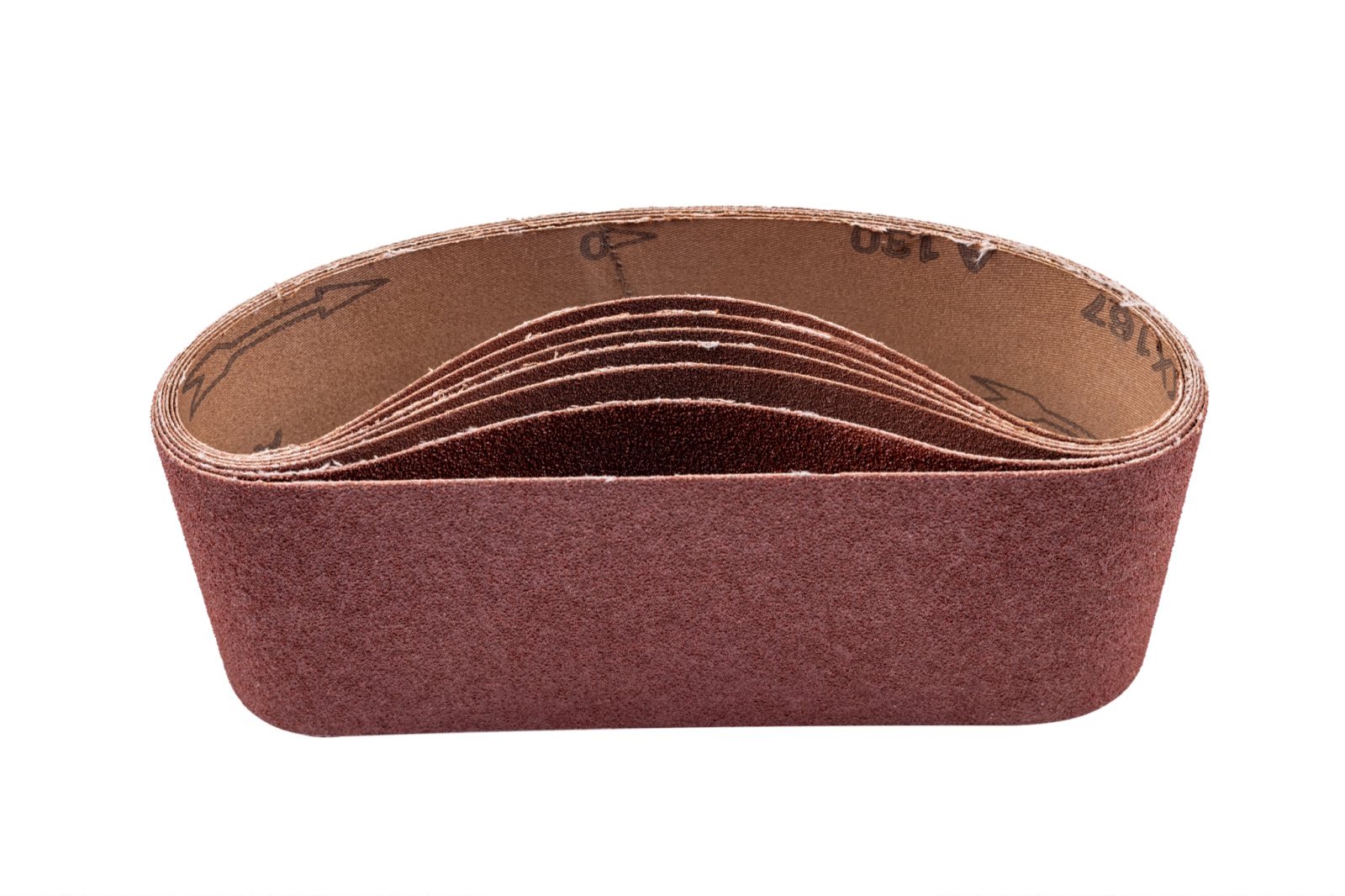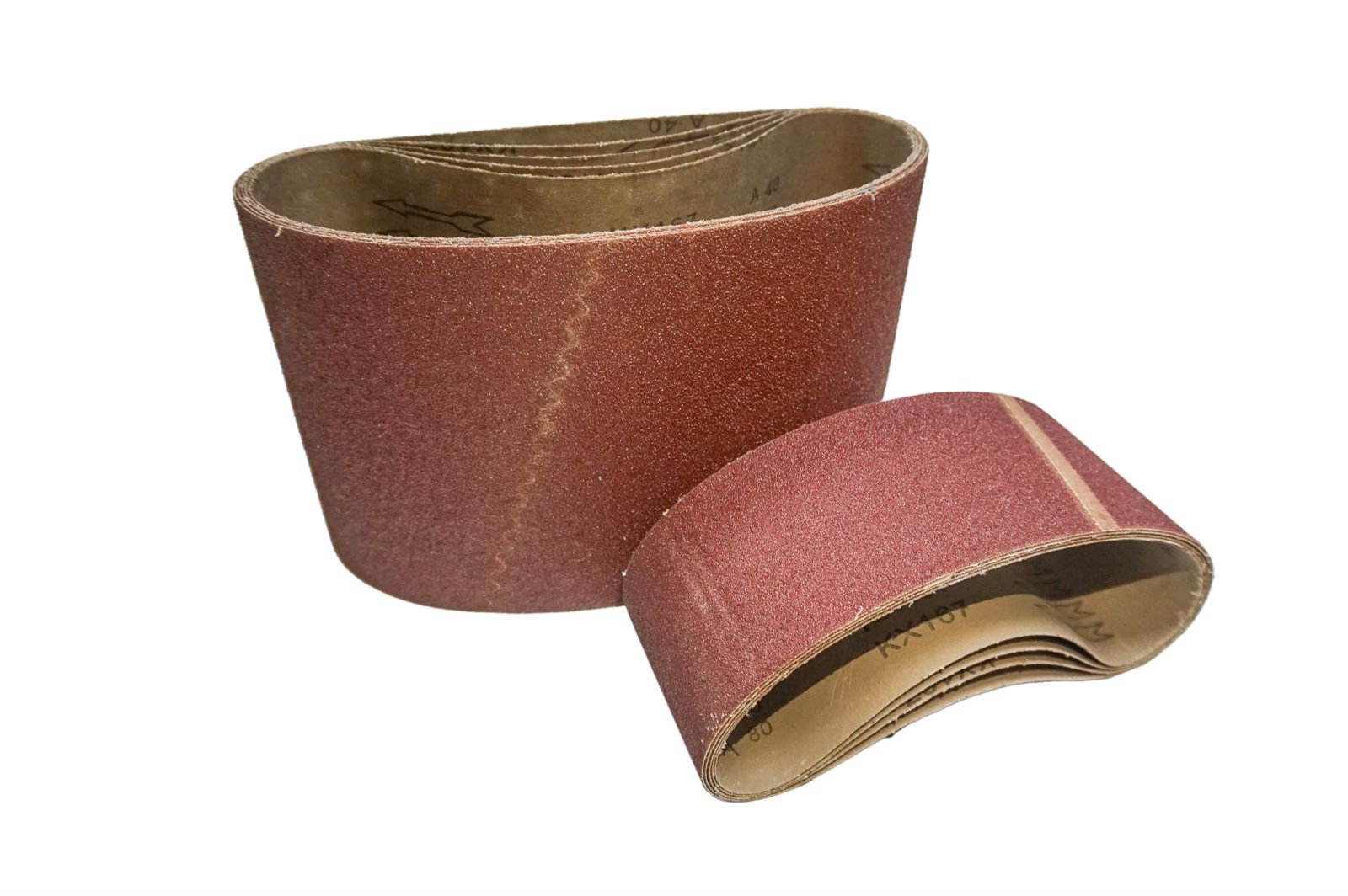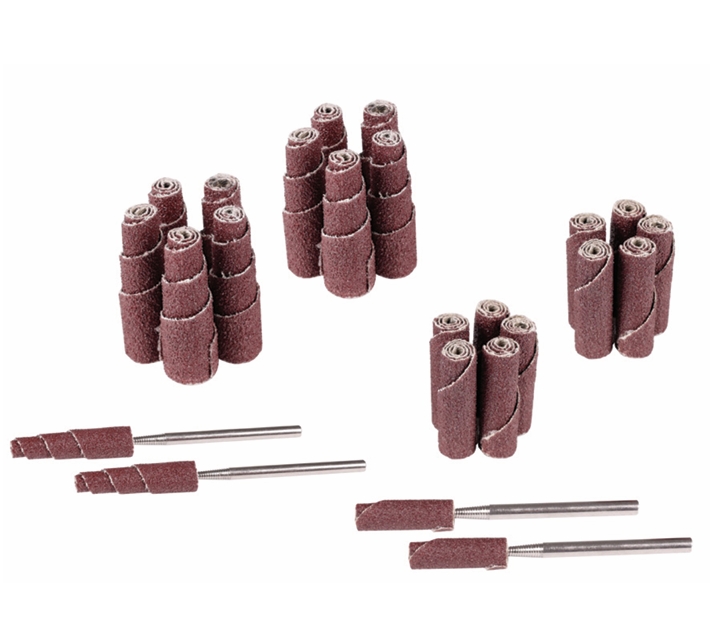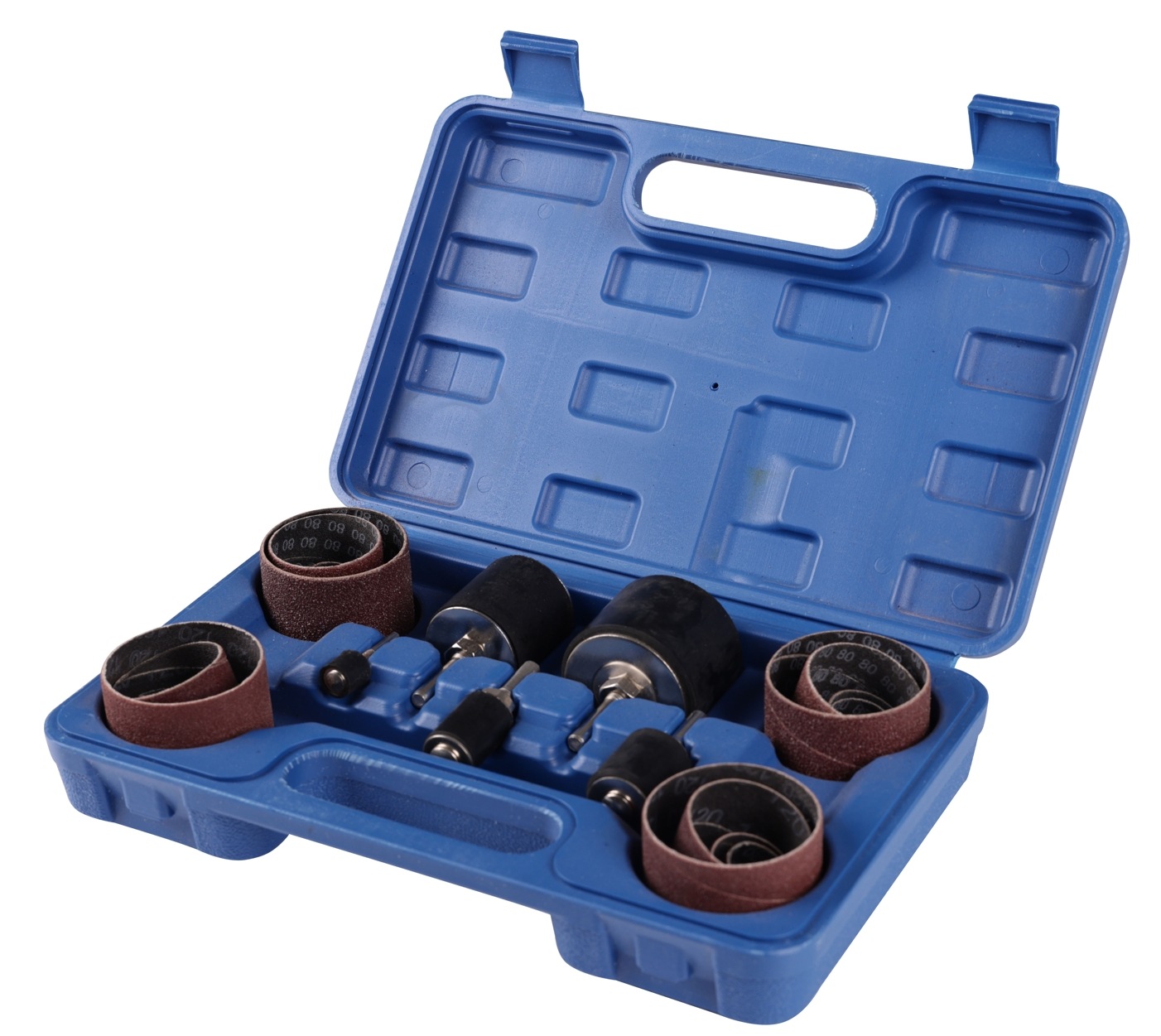Aluminum oxide sanding belts become an important tool in the hands of professionals and hobbyists because they are durable, versatile, and effective. It is a belt for the purpose of material removal, surface smoothing, or preparation of a workpiece for finishing, and is used in woodworking as well as metalworking applications within automotive repair and home improvement projects. High-performance abrasive grain means that belts made from aluminum oxide sands will effectively run on wood or metals and plastics, including composite materials. Surface quality is not compromised under such a wide range of applications.
Sanding belts are made up of semi-friable aluminum oxide grains mounted on an X-weight cotton backing; this offers cutting action coupled with flexibility. Semi-friable grains break and create new sharp edges during use, so the same high level of performance is maintained for life as that found when the belt was new. Open coat belts work well on all load-carrying materials—aluminum, non-ferrous metals, and different types of wood—hence belts based on these specifications find general application from professional workshops to industrial manufacturing down to simple DIY jobs at home where repeatability is assured.
How Aluminum Oxide Sanding Belts Work
The oxide aluminum belts work through grain cutting abrasives, wherein the sharp edges of grains do material removal by cutting into the surface of the workpiece. Unlike hard wheels, belts have a continuous abrasive surface that spreads pressure over a larger area, and hence no defects like grooving, burning, or uneven surfaces happen. It changes flat, round, and odd shapes; therefore, detailed woodwork, metal forming, or auto-body panel restyling make use of it.
E.g., when it sands a curved wooden chair leg, it follows the contour precisely because high spots are removed; low spots will not immediately create deep grooves. In metalworking, belts may be used to smooth weld seams on stainless steel or aluminum panels without overheating the material, and meanwhile achieve a consistent surface. Factors influencing the performance of a belt include the speed of the belt, pressure applied, grit size, and workpiece hardness. If properly managed, they ensure efficient material removal and optimal surface quality while extending belt life.
High Processing Efficiency
Aluminum oxide sanding belts are highly preferred due to their great processing efficiency. They can be compared with the wheels for grinding or manual sanding, as they remove material faster and more consistently. The belts maintain sharp edges of abrasive grains that run on a continuous surface belt, hence enabling the operators to shape, smooth, or polish large surfaces within a very short period.
It means shorter cycles of production in the industry, higher throughput, and lower labor costs. Several dozen aluminum panels may be processed in exactly the same time frame with the use of traditional grinding wheels, as compared to utilizing a few panels with metal fabrication shops. It will smooth large surface areas of plywood or MDF efficiently, ready for finishing that does not show any uneven texture left behind. The high removal rate permits heavy material reduction to be achieved by the operator; therefore, belts are applicable to big industrial projects and small workshops.

Superior Surface Quality
Belt sanding gives better surface finishes since it allows the combination of grinding, lapping, and polishing in one single operation. Belts run at low friction with minimum vibration, so there will be no possibility for burns to take place, as well as cracks or any other uneven texture. Much surface roughness is reduced to give even smoother finishes ready for painting or staining, or coating.
A wooden tabletop sanded with belts of progressive grits does achieve an even surface and polish that will take on a professional look when applied with varnish or stain. In auto repair, the belt removes rust, filler, or paint, leaving a smooth substrate ready to accept primer while providing for favorable residual stress distributions that help prevent warping or distortion of both metal and wood components. This is particularly significant when the work must be precise—furniture of the high-end variety or perhaps an automobile body.
Versatility Across Materials
Aluminum oxide sanding belts are extremely versatile, capable of handling a wide range of materials:
-
Wood: From soft pine to hardwoods like oak and maple, belts remove rough surfaces, round edges, and prepare panels for finishing.
-
Metals: Stainless steel, aluminum, and non-ferrous alloys can be deburred, polished, and smoothed using the proper grit selection.
-
Plastics and composites: 3D-printed parts, acrylic sheets, and composite panels benefit from controlled sanding without heat distortion.
-
Stone and glass: Limited use on soft stones and certain glass edges is possible, although specialized belts are required for harder materials.
The belts will be able to adjust themselves on flat surfaces, curves, or any complex contours; hence, furniture shaping, automotive panel work, or decorative metal pieces can be achieved. Backing material, grit size, and belt dimensions are variables in the equation of a certain project that will result in maximum efficiency and surface quality.
Key Advantages of Aluminum Oxide Sanding Belts
Aluminum oxide sanding belts provide multiple advantages that make them a preferred choice across industries:
-
Durability: Semi-friable grains maintain cutting efficiency even under continuous use.
-
Versatility: Effective on wood, metal, plastics, and composites.
-
Self-sharpening: Grains fracture during use, maintaining a sharp cutting edge.
-
Cost-effectiveness: High performance reduces tool replacement frequency and labor costs.
-
Safety: Lightweight belts reduce the risk of injury and minimize vibration and noise during operation.
These advantages make aluminum oxide belts suitable for both large-scale industrial applications and smaller DIY projects, ensuring consistent, high-quality results across a wide range of materials and techniques.
Applications Across Industries
- Woodworking
In woodworking, aluminum oxide belts are used to shape furniture parts and take the rough out of lumber, as well as for surface preparation for varnish, stain, or paint. Progressive grit sanding belts, coarse to fine, will leave a smooth finish with natural wood grain preserved. Panel finishing and edge rounding, plus all detail carving work that can be sped up by a belt, are favorites with furniture makers. - Metalworking
Aluminum oxide belts find general application in the metal fabrication industry for deburring sharp edges, grinding weld seams, or polishing surfaces. Controlled belt sanding avoids overheating and thus preserves the integrity of the material, especially for stainless steel and aluminum. Belts are used by industrial workshops to finish metal components that have to be assembled or coated, hence productivity is improved, together with surface quality. - Automotive Repair
Belts play a very major role in auto shops dealing with surface prep of bodywork, sanding fillers, removing rust, and blending paint. Belts with fine grit help technicians achieve smooth transitions from the repaired area to the rest of the panel. Low vibration, smooth-running belts also go a long way in keeping a uniform finish that is very important to quality work on automobiles. - Plastics and Composites
Belt sanding is the most recommended for applications where fusing of 3D-printed parts, shaping composite panels, and finishing lightweight materials are involved. Since the material used to make the belts has controlled abrasive action, it does not produce much heat; there will be no warping or deformation. Aluminum oxide belts can be used where extreme fineness is required in model making, prototyping work, and composite fabrication. - Stone and Glass
Aluminum oxide belts may be used for finishing apparently soft stone edges or glass surface applications. Other abrasives are required for harder stones, but belts of this kind can be used for shaping and polishing soft stone tiles, decorative panels, or glass elements.
Selection Guide
Selecting the correct aluminum oxide sanding belt depends on several key factors, including material type, surface configuration, task requirements, and machine compatibility. The following table provides guidance:
| Factor | Recommendation |
|---|---|
| Material Type | Wood: coarse to medium grit; Metal: coarse to fine grit; Plastics: fine grit |
| Surface Type | Flat: paper-backed belts; Curved: cloth-backed belts |
| Task | Heavy material removal: coarse grit; Polishing or finishing: fine grit |
| Sander Compatibility | Ensure belt length, width, and speed rating match machine specifications |
Correct selection ensures optimal belt performance, consistent surface finish, and extended lifespan, reducing downtime and maintenance costs.

Maintenance and Care
Proper maintenance prolongs belt life and maintains efficiency:
-
Avoid overheating to prevent glazing of the abrasive surface.
-
Clean belts regularly using a belt cleaning stick to remove embedded debris.
-
Store belts in a cool, dry environment to prevent moisture damage.
-
Replace worn or damaged belts promptly to avoid uneven sanding.
Routine maintenance ensures safer operation, consistent material removal, and high-quality finishes for both professional and DIY applications.
Safety Considerations
While aluminum oxide belts are safer than grinding wheels, proper safety precautions are essential:
-
Wear safety goggles to protect against flying debris.
-
Use dust masks or respirators to avoid inhaling fine particles.
-
Wear gloves to prevent abrasions.
-
Secure workpieces firmly to prevent slippage.
-
Ensure adequate ventilation in enclosed workspaces.
Lightweight construction and minimal vibration reduce fatigue and risk of injury, making belt sanding both efficient and safe.
Advanced Tips for Professionals
Professional operators can maximize efficiency and surface quality with these techniques:
-
Use progressive grit sanding to achieve smooth finishes.
-
Regularly clean belts to maintain cutting efficiency.
-
Cloth-backed belts are recommended for curved or contoured surfaces.
-
Monitor belt tension to prevent slippage and uneven sanding.
-
For metalworking, apply lubricants to reduce heat buildup and extend belt life.
Aluminum oxide sanding belts present a productivity-quality surface, and general stock removal on wood and metal at an attractive price with safety. That is why they are very popular for use in woodworking, metalworking, and automotive repair shops for plastics and composites. The right choice of belt, maintenance of that belt in good condition, and not applying improper sanding lead to finishes varying over an extensive range of materials. These belts are dependable for delivering economical versatility in the application, whether shaping or smoothing, polishing or rust removal to achieve professional results from both industrial and DIY perspectives.



